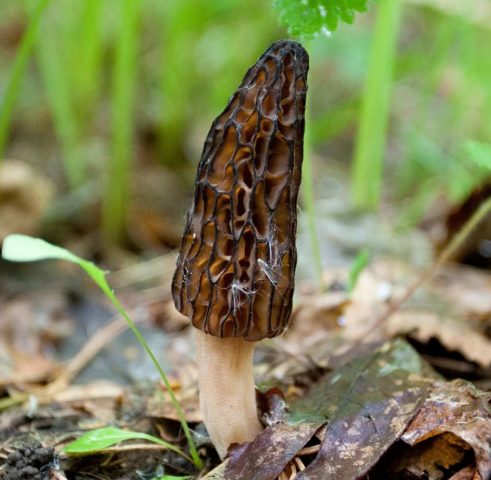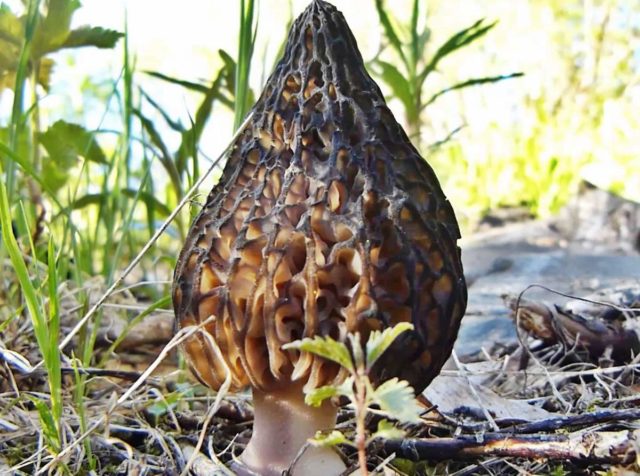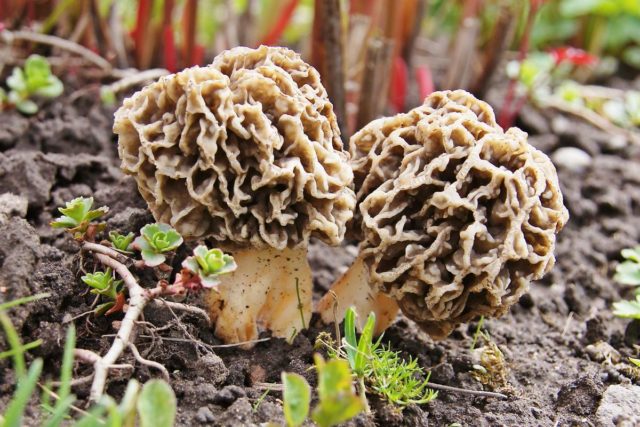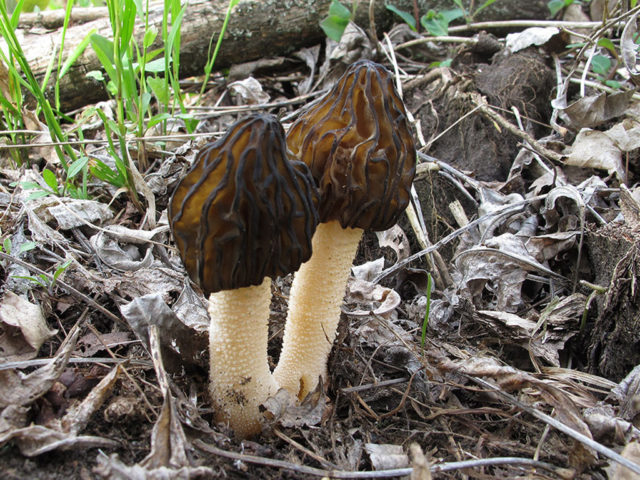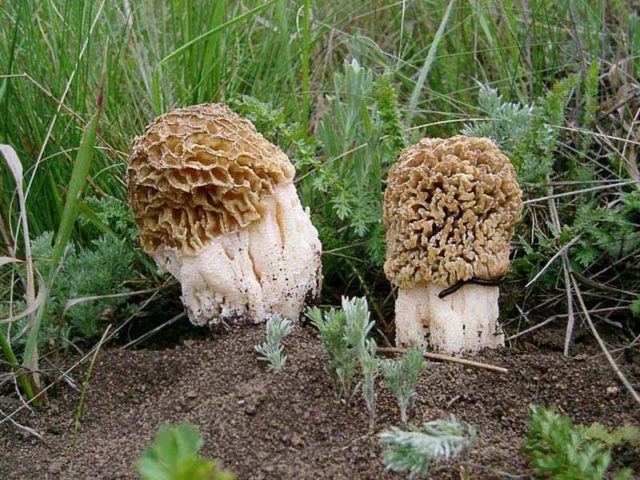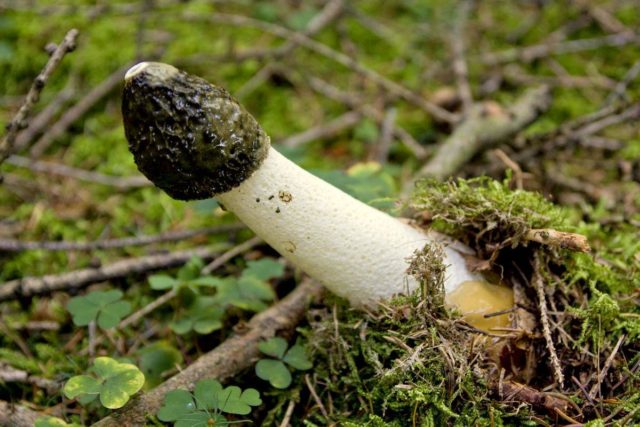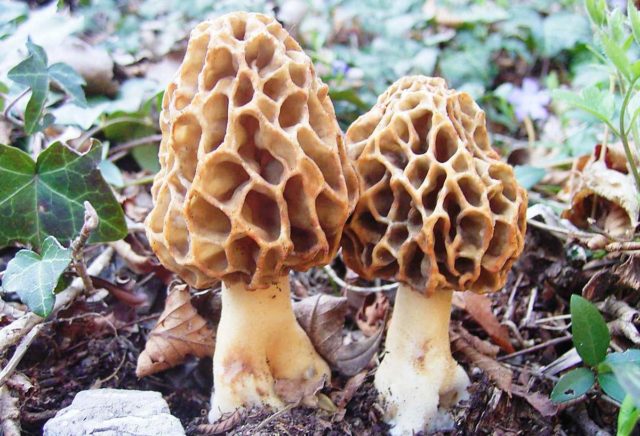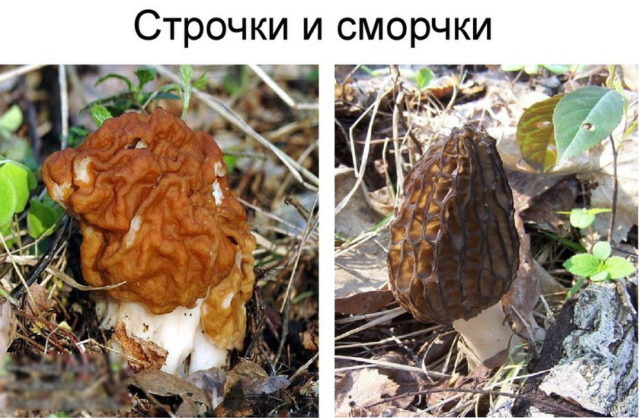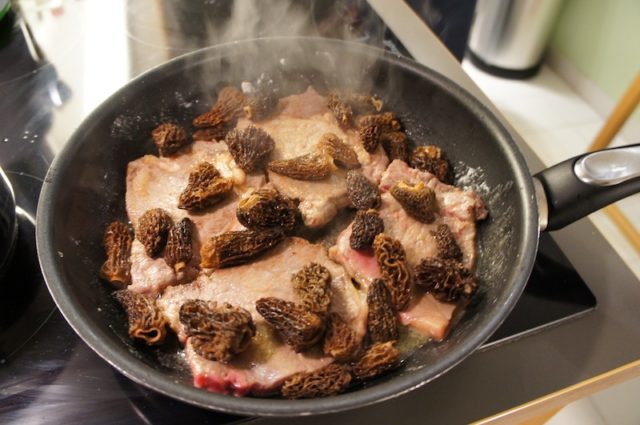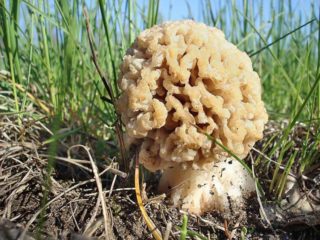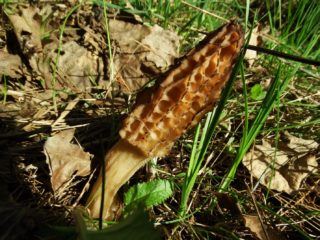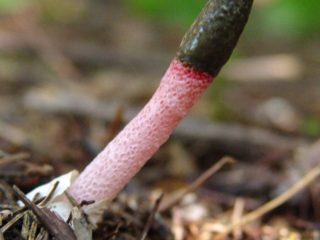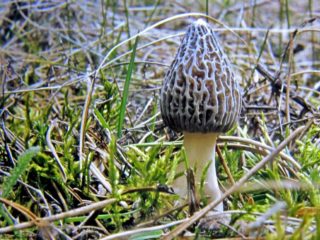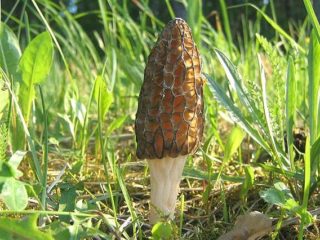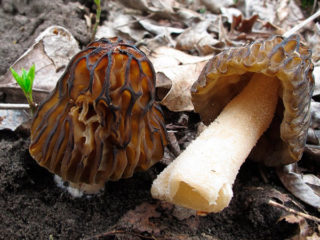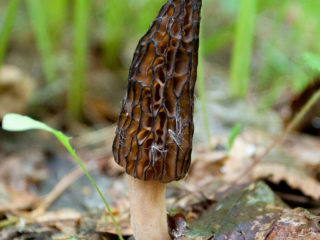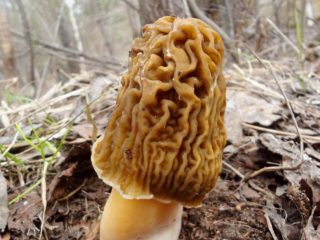Content
- 1 Why is the mushroom called morel?
- 2 Types of morel mushrooms
- 3 What do morel mushrooms look like?
- 4 Where do morels grow?
- 5 Mushrooms similar to morels
- 6 Is the morel mushroom edible or not?
- 7 When to pick morel mushrooms
- 8 What do morels taste like?
- 9 Why are morels useful?
- 10 Harm of morels
- 11 Application of morels
- 12 Is it possible to get poisoned by morels?
- 13 Symptoms and signs of morel poisoning
- 14 First aid for morel mushroom poisoning
- 15 Conclusion
Morels are edible mushrooms that are found in forests in early spring. They belong to the conditionally edible group. If you follow the cooking rules, you can get tasty and healthy dishes from them. Photos of morel mushrooms will help distinguish them from other varieties.
Why is the mushroom called morel?
According to the photo and description, morel mushrooms have a spongy surface. According to one version, this name comes from the word “wrinkle”. The fruiting body is heterogeneous and resembles deep wrinkles. Representatives of this species were popularly called snowdrops because they appeared after the snow melted.
Types of morel mushrooms
The Morel genus has not yet been well studied. There are more than 80 species in this group.This is a complex classification that is constantly changing and does not have clear criteria. All varieties have a similar structure and are considered conditionally edible.
Tall morel
The variety is distinguished by its large size: it reaches 5 - 15 cm in width, 30 cm in height. The fruiting body is dark in color, covered with triangular-shaped cells and narrow vertical folds. Specimens are collected in May, less often in June. The tall species is found on the edges of forests and mountainous areas.
In young specimens, the cells are brown with an olive tint, in mature specimens they are brown, almost black, and the partitions are ocher. The mushroom stem is cylindrical and has a granular texture. Its height reaches 15 cm, diameter - 3 cm. The leg, initially white, gradually becomes yellowish.
Conical morel
In the conical variety, the cap has an elongated shape, its edges grow tightly to the stem. The height is from 6 to 18 cm. The diameter of the cap is from 2 to 8 cm, the height is up to 9 cm. The color of the conical representative is varied, from yellow to brown. Most often they are brown or grayish in color.
The inside of the cap has an empty cavity. On top there are convex folds of a darker color. Externally, the surface resembles cells stretched from top to bottom.
The leg is cylindrical, up to 5 cm high, 3 cm thick. Its inner part is also hollow. The surface of the leg is velvety, covered with grooves. The flesh of the conical type is cream or white. It is thin, fragile, tender, and dries quickly. There is no taste or smell.
Real morel
Edible morel, or real morel, is the most popular variety.Its fruit body is large, fleshy, the inside is hollow. This mushroom reaches a height of 20 cm, while having a small mass.
Representatives of this species have an egg-shaped cap, often round, sometimes flattened. The edges are in close contact with the leg. The height of the cap is up to 7 cm, its girth reaches 3 - 8 cm. There are specimens with yellow, brown and gray colors. Gradually their color darkens. The cap has an uneven surface; it consists of numerous depressions.
The edible leg is hollow, cylindrical-shaped, with voids inside. It breaks easily and has a whitish color. With age, this specimen acquires a yellow or beige color. Its pulp is light, ocher or cream in color, and is easily crushed. The taste is pleasant, there is practically no smell.
Semi-free morel
The mushroom has a pronounced stem and cap. Its average height is 10 cm. Sometimes representatives of this group grow up to 20 cm. Their internal cavities are not filled with anything. The cream stem breaks easily. Its height is from 5 to 12 cm, its girth reaches 3 cm. Its surface is rough to the touch.
The cap reaches 2 - 4 cm in height. Its upper part fuses with the leg, its edges remain free. There are irregular folds on the surface. There are clear ribs that gradually turn black. The color of the cap is brown, light or dark.
Steppe morel
This large mushroom grows up to 25 cm in height. Its weight reaches 2 kg. Prefers open areas: steppes, meadows, clearings. The steppe variety has a gray-brown spherical cap measuring from 2 to 10 cm, the edges of which grow to a cream-colored stem.
The steppe species is developing rapidly. The fruiting body is formed in 7 days.In spring, the steppe variety often grows in groups. If the winter turns out to be little snow, then the mushrooms do not have enough moisture to develop. The dense white pulp is characterized by the absence of voids. Numerous cells are clearly visible on the cap.
stinky morel
The mushroom is also known as Veselka vulgaris. It reaches a height of 10 - 30 cm. Its fruit body is egg-shaped, with a girth of 6 cm. The shell is leathery, smooth, white or cream-colored. Inside there is gelatinous pulp.
As the vesel grows, a spongy cylindrical leg forms. Then a cap up to 5 cm high is formed. Its surface is cellular, mucous, dark olive in color. There is a disc-shaped hole at the top. Mature specimens have an unpleasant rotting odor.
Veselka vulgaris is not used when it reaches full maturity. Within a few hours, the pulp decomposes. Veselka is harvested in the early stages of growth, when it has the shape of an egg or a traditional mushroom.
What do morel mushrooms look like?
Morels are large mushrooms with a fleshy, fragile fruiting body. They usually consist of a stem and a cap. Their surface is wrinkled, reminiscent of a honeycomb, only empty and narrower. The bell-shaped cap has a spore-bearing layer, its surface is spongy or wavy. The edges may adhere to the stem or remain free. The color of the cap is brown.
The height of the mushrooms is 2 to 25 cm. Their legs are white, brown or yellowish, cylindrical in shape. Sometimes there is a thickening near the base. The surface of the leg is smooth or scaly.
The fruiting body has cavities inside and consists of numerous branches. They are separated by partitions; in the center there are pores for the transfer of useful substances. The pulp is white, waxy, thin, and breaks easily.
Where do morels grow?
Often these representatives are found in parks, forest and steppe areas. In addition, they appear in the 3rd – 4th year after fires and fellings.
In what areas do morels grow?
The morel grows in a temperate climate zone. It is collected in Eurasia, North America and Australia. Some species are found in Mexico, India, and Turkey.
Five varieties are well known in Russia. Morel mushrooms live in the Moscow region, Tver, Ulyanovsk, Samara, Rostov regions. They are also found in the Urals, Altai, Siberia, and Primorsky Territory.
In which forests do morels grow?
Morels prefer well-lit areas. They grow in fertile soil saturated with lime. They are more often found alone, rarely forming groups. They are collected in coniferous and mixed forests, parks and apple orchards.
Sometimes representatives of the Morel family appear on sandy soils. In the southern regions they are collected from lawns and garden plots. When searching, it is recommended to check ravines, banks of rivers and streams, fallen trees, but it is easier to conduct a “silent hunt” in clearings, lawns, and next to forest paths overgrown with tall grass.
Mushrooms similar to morels
Morels are similar in appearance to other mushrooms that grow in early spring. They are often confused with strings that contain dangerous poison and are called false morels.
Strog is a spring marsupial mushroom similar to a morel. When eaten, the toxin that the mushroom contains changes the composition of the blood.The lethal dose of such a product is 0.4 - 1 kg. To remove poison from the pulp, you need to cook it for at least 10 minutes. All the poison then goes into the water, which must be drained. Then the mass is washed with clean water.
The stitch and the morel have obvious differences. The first ones have a shapeless cap that resembles the convolutions of the brain. Morels have a cone-shaped, elongated cap. The lines do not push the soil apart, but grow through it, so their stems need to be cleared of soil, small branches and other debris.
To distinguish between these types of mushrooms, you need to cut off their stem. Morels have a hollow interior, not filled with anything. The stitches are distinguished by a uniform, sinuous flesh; In addition, they do not have a pronounced mushroom smell.
Is the morel mushroom edible or not?
Morels are conditionally edible mushrooms. There is an opinion that they need to be boiled first, then drained and rinsed well. In reality, no such precautions are required when using morels. Standard heat treatment is sufficient before consumption.
When to pick morel mushrooms
These mushrooms are collected in early spring, when the snow cover melts. In Europe they appear from April to the end of May. In Russia, this variety grows no earlier than the first ten days of May. The last specimens are found in mid-June. Sometimes in a warm autumn a second wave occurs, then morels are collected before the beginning of October.
What do morels taste like?
The product is valued for its rich mushroom taste. In Europe and America they are considered a delicacy with virtually no odor.
Why are morels useful?
Since ancient times, representatives of morels have been used to treat eye diseases, improve myopia and age-related farsightedness. The composition contains substances that strengthen the eye muscles and protect the lens from clouding. Based on these fungi, drugs are being developed to combat cataracts.
In folk medicine, the product is used to treat diseases of the stomach and intestines. A tincture of these mushrooms is a good remedy against conjunctivitis. The pulp also contains polysaccharides, which suppress the activity of cancer cells and viruses and stimulate the immune system.
Harm of morels
To prevent mushrooms from harming the body, they are washed and heat-treated before use. If you have diseases of the pancreas, kidneys or digestive system, first consult a doctor.
Application of morels
Fruit bodies are added to sauces and side dishes, combined with meat, potatoes and other vegetables. To get a tasty and healthy dish, you need to know how to cook morels. The mushroom mass is placed in water and brought to a boil. Keep the pan on the stove for 10 - 15 minutes. The finished mass can be fried, added to soups, salads and other dishes.
Is it possible to get poisoned by morels?
Morels are most dangerous when consumed in excess. In addition, mushrooms are not used raw, as there is a high risk of poisoning. If you follow these simple rules, you can avoid negative consequences.
Symptoms and signs of morel poisoning
Food poisoning is determined by the following criteria:
- severe stomach pain;
- nausea, vomiting;
- increased heart rate;
- diarrhea;
- headache;
- weakness, drowsiness.
The first symptoms appear 6 hours after consuming the product. If measures are not taken, tissue destruction of the liver and urinary system occurs. In severe cases, convulsions, hallucinations begin, and the victim loses consciousness.
First aid for morel mushroom poisoning
In case of fungal poisoning, the victim is given first aid:
- wash the stomach;
- give activated carbon or other sorbent to drink;
- include drinking large amounts of warm liquids.
It is necessary to quickly remove dangerous toxins from the patient’s body. A doctor is called to treat the poisoning. The specialist will prescribe treatment or decide to transfer the patient to a hospital. The rehabilitation period takes up to several weeks, depending on the age and condition of the victim.
Conclusion
A photo of morel mushrooms will help distinguish them from other varieties. Only strong, undamaged specimens are used for food. It is important to cook mushrooms correctly, then they will bring health benefits. When the first signs of poisoning appear, consult a doctor immediately.
